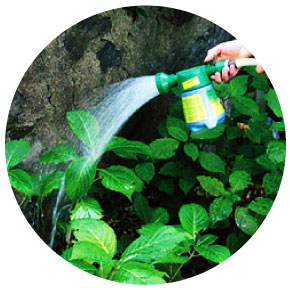Fertilization

Fertilizers can provide trees with essential elements that help to produce the food they need to survive. The amount of fertilizer that should be applied, and the frequency at which this should be done, varies greatly. For example, trees located in urban areas have a greater need for fertilization, as factors ranging from soil compaction to lack of moisture can lead to high stress conditions.
All plants, including trees, need nutrients that can be divided into two groups: macronutrients and micronutrients. Macronutrients are the elements that can be found in larger amounts, including calcium, potassium, nitrogen, sulfur, phosphorous and magnesium. Adding
more of these to an environment through fertilization will help to promote growth, while a decreased amount will slow the rate of growth and result in visible deterioration.
Fertilizer comes in both organic and inorganic varieties. Inorganic materials tend to break down faster, allowing the tree to benefit more quickly, while organic fertilizer takes longer to decompose and provide nutrients. A combination of both allows the tree faster access to plant food, while also creating a longer window of overall effectiveness.

